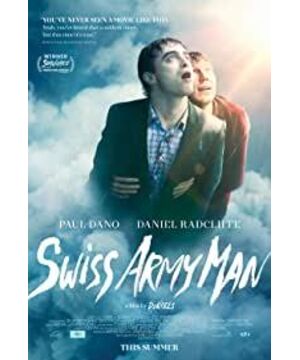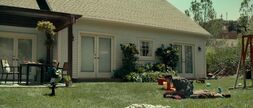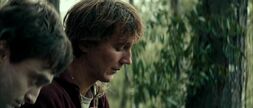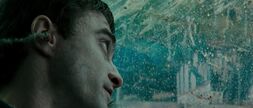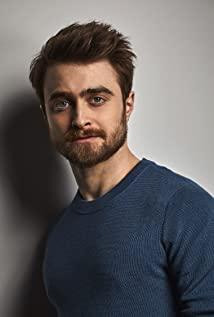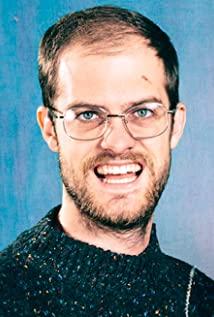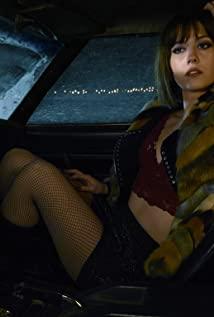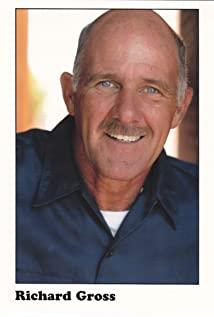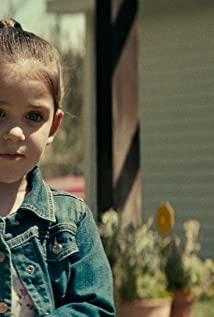Original: http://filmmakermagazine.com/99076-fart-to-the-heart-larkin-seiple-on-swiss-army-man/#.V_UGi_l96Hs
Filmmaker: How did you meet Swiss Army Man co-directors Dan Kwan and Daniel Scheinert (aka “Daniels”)?
Seiple: We all studied at Emerson College in Boston but I didn't really know them until after. I met Dan Scheinert because he was in a comedy troupe with one of my roommates. After college [the Daniels] made their first music video and I saw it at a small festival put on by other music video directors called “Videomacher” in Los Angeles. The majority of the videos screened were these big budget “professional” projects and Daniels had made their video for literally no money with a 7D and it just blew everyone else's video out of the water. I tracked down Scheinert after the screening and gushed about how their video had blown my mind and it made all of the other work feel stale. I had completely forgotten we were surrounded by other directors and very loudly said something like, “You guys destroyed it. Everything else here is crap.” And he was like,“Shhhh.” (laughs) I told them that I wanted to work with them and then they called me to do [Foster the People's Grammy-nominated music video] “Houdini.”
Filmmaker: At what point did you first hear about Swiss Army Man and how did the idea evolve before you started shooting?
Seiple: I got involved about a year before [we shot it]. The Daniels were constantly revising the script. It was a very zany script and some of the ideas [from earlier drafts] were even crazier [than what's in the final film], things like laser eyes and an endless rope made of hair. They kept trying to find this balance between touching and bizarrely comedic, a story you could laugh at but also have it resonate with you. I think they distilled the idea to “a fart to the heart”.
Filmmaker: Did anything get cut because of budget or was everything cut for story?
Seiple: It was all for story. They would have a great idea that was really fun, but then they would realize that it completely took away from the story or it killed the rhythm so they would scrap it.
Filmmaker: Where did you end up shooting?
Seiple: We quickly discovered that southern California does not have beautiful forests and no real underbrush that makes forests lush and majestic. We ended up going to northern California, which has one of the most beautiful forests in the world. There's a place in Eureka in the Redwoods called The Avenue of the Giants that is just stunning. These trees are so huge that you feel like you're surrounded by ancient ancestors. It's very quiet too. It reminded me of how the forests feel in Princess Mononoke. There's just naturally a sense of magic to it.
Filmmaker: How about the beach location for the opening scene?
Seiple: That beach was also in Eureka. The project was actually shot in three different cities, which made it very challenging. We shot a lot of the bus sequence and a lot of the technical builds in the woods in a small forest outside of San Francisco that matched the redwoods in Eureka. Then we shot in Los Angeles for two weeks — everything in the water tank was shot there, we shot the opening fart scene of [Manny, played by Radcliffe] shooting across the water, and we shot the bear scene because it's the only place you can get a bear. We also shot all the cave work [in LA]. The cave is actually the cave they used for the Batman TV show, where the Batmobile drives out. So we started in San Francisco, came back to Los Angeles,and then we ended in Eureka with a small crew going to get all of these wonderful moments in the most beautiful forest we could find.
Filmmaker: How long was the shoot?
Seiple: I think we had 25 days, but we had travel days on top of that. Then we got an extra day to do pick-ups on the very last day of the shoot. That was just me and the directors. Scheinert is the same exact build as Paul Dano so we just kept [Dano's] wardrobe and shot a lot of the travelogue shots [with Scheinert doubling him], all these beautiful vistas of Scheinert walking around with the dummy.
Filmmaker : Are any of the wide shots of Manny and Hank (Dano) crossing that ravine on the giant pipe actually Scheinert and the dummy or is that a VFX composite?
Seiple: No, that shot is fake. We were scouting for hours east of Eureka trying to find a place to shoot that [practically]. We didn't find one but we found a perfect location for our plates. However it was five hours from any major city and we knew we could never come back. Luckily we brought a Red Epic camera so we were able to capture plates for the ten or so angles we needed for the sequence.
That pipe sequence was actually shot with several different pieces put together. There's the shots of them getting onto the pipe, for which we built a fake pipe into a ditch near the side of a road. For the profile angles we broke down and rebuilt the pipe on a ridge so that our background felt high up and far away. Lastly, when they're hanging off the pipe and for the falling plates, we had to bring in a crane and suspend them and shoot that [against] greenscreen.
Filmmaker : You shot the film in July of last year. How did you get it ready for Sundance the following January? That's incredibly short turnaround.
Seiple: Oh yeah, it was nuts. We had an on-set editor, which helped us just emotionally to be able to come back in every day and have a scene from a week ago to look at and see that it was working or if we needed to do pickups. Once we wrapped, Daniels and their editor didn't stop [working] until Sundance. It was crazy. I think Dan Scheinert was doing VFX comps on Christmas Day.
Filmmaker: Did you have a DIT coloring dailies for the on-set editor?
Seiple: We did. I had my DIT Matt Conrad, who has done the last three movies with me and for the most part all my commercials and music videos. He built a LUT that we would tweak per scene. For example in the forest there's all this green bounce everywhere so you're constantly trying to neutralize that so people's [skin tones] don't look like an alien's. Or if we were cheating a scene for dawn we would warm the highlights and add a bit of magenta. We were able to apply the LUT to our dailies so as they edited they could discern what images worked.
Filmmaker: Did you go back and tweak the color grade any more after Sundance?
Seiple: We did, but it's pretty close [to what screened at Sundance]. We went back and tweaked some of the crazier sequences, like some of the night work was really tricky to keep the continuity with a bear and a fireball and all of these visual effects shots. We also added a level of grain to the final version that wasn't at Sundance to fight the digital look of it. It came off very sharp at the first screening and we just wanted to find a way to soften it a little bit more.
Filmmaker: You used Cooke Anamorphics with the Alexa XT?
Seiple: Yeah. The Cookes are a really lovely set of lenses. At a T4 or a 5.6 they're pristine and very sharp, but if you shoot them around a T2.8 they start to have all these little inconsistencies that look really lovely on camera. The 75mm goes really soft on the top and bottom when you shoot wide open, which helped enhance some of the more subjective close ups.
Filmmaker: I read an interview where Daniels talked about the very different processes of Radcliffe and Dano. How do you take into account actors with different working methods when you're planning the order of your coverage?
Seiple: If it was a different movie I'd have a great answer for you, but for this movie we were hustling and moving very fast so those choices came down to “this is the shot that makes the most sense to do next and we 've only got three takes to do it." It was very easy to shoot Daniel as he's always static, but Paul really likes to be in the moment and just let it happen. That's challenging, because he jumps and moves and darts around a lot and as a camera operator you're just like, “Alright, he's still. Nope! He's over here now.” In one of the opening shots of the film when Paul first hears the fart and he snaps up, you can see in the movie that the camera was not ready for him to pop up and so the camera does a slow drift up to catch up to him. I begged Daniels, “Just give me one more,” but they loved it.
Filmmaker: Walk me through the fake Mannys. Did each have a specific function?
Seiple: We had a small brigade of Mannys. One was stunt Manny, where the face work wasn't as precise but he was about the weight of a human being so we could throw him around realistically. One was a much lighter Manny that I think had the best face work and we would use that for things like the scene where the raccoon [chews on Manny's face]. There's one take that they took out that I wish they would've kept where the raccoon goes right for Manny's eyelid and pulls it open and it was terrifying. (laughs) That Manny was also super lightweight so Paul wouldn't mess his back up by carrying around 150 pounds of weight every day. And then there was the floating Manny that we built a small air tube into so that it could consistently fart and float in the water.The floating dummy was a little tricky because we had to have multiple people on strings pulling him at the same time you had a guy running with an air tank so the dummy could emit farts.
But ultimately we used Daniel Radcliffe more than anything else. Paul does carry Daniel quite a bit. When a scene wasn't working with the dummy, we'd say, "Alright, let's just do it with Daniel." Daniel was also really insistent on trying to be in every shot he could to support Paul. We ultimately only used the dummy for things that a human shouldn't do.
Filmmaker: Did the AD supply your on-set fart noises?
Seiple: Actually either Kwan or Scheinert would do it when we were shooting because the farts had to be very specific. They all have a different emotion to them. I don't know if the video made it [online], but when Manny first starts farting on the beach Scheinert was conducting him off camera, literally like a symphony of farts. Scheinert would raise his arms and bring them down and raise them again and then simmer it down. It was a pretty interesting sight to behold.
Filmmaker: Tell me about the set-up for the opening title card shot – which is a super wide shot of Hank riding Manny like a fart-propelled jet ski. Both the actors and the camera are moving at a pretty good clip.
Seiple: That whole sequence, like everything else, was pieced together. All of the shots of Paul and Radcliffe were done with them on a giant boogie board dragging them through the Pacific Ocean with some gnarly waves. They could at any moment get tossed off , which is a little intimidating if you don't like swimming in the middle of the ocean. So we shot all of their close-up work like that and then we had a stuntman dressed in Paul's gear and we put the dummy on a very small knee board and the stuntman would climb on and we would get like 10 seconds of footage before he got knocked off by a wave.
Filmmaker: So the stuntman was being pulled by some type of boat?
Seiple: Yeah, I think it was a motorboat pulling them and then in post we removed the wake and the foam caused by it. The camera was on a zoom lens tracking with them at high speed on a flat-bottom boat. That scene was bananas to shoot and shooting in the ocean is very frustrating. Everything is always drifting or changing with the current so we figured the best solution was to shoot on a zoom, on a crane, with a remote head so we could literally swing the camera anywhere we had to. We barely got all the shots. We grabbed the last one at dusk and there was a very beautiful sunset but it lit the water with oranges and pinks so in post we had to color grade the crap out of it and force blue back into the water.That was a very challenging scene to shoot/grade because it goes from hard sunlight to soft sunlight to sunset and we had to make that all feel like it takes place at the same time. Luckily we had Sofie Borup color grade the film and she did a wonderful job.
Filmmaker: Do you have any horror stories about the bear or the raccoons?
Seiple: The raccoons were good. I believe their names were Boris and Natasha. Raccoons can really only either grab something or run away and each of the raccoons had a specific move that it could do. So they weren't too bad, we just had to do a lot of takes and they were constantly trying to escape, which made the owners nervous because we were in a giant forest.
The bear was challenging to shoot in that we didn't have a lot of time with it. We had to set up an electric fence around the bear wherever we were shooting just in case something went wrong, which is nerve-wracking to shoot any sequence where you're surrounded by an electric fence for your protection. The owners also seemed a little intimidated by the bear. (laughs) They looked very nervous when he wasn't in the cage. Its main lure was ice cream sandwiches. They would throw five or ten of them back into his cage whenever they finished a take. He loved them. The bear's name was Tag and he was very sweet but you could hear him rolling around in the cage and you thought, "My god, how much does he weigh?” The suspension on the truck was just shaking.
One tricky part was that he photographed much darker than we expected so we had to redo all of our lighting once we actually framed up on the bear. Our gaffer, Matt Ardine, had designed a wonderful lighting setup of moving lights on Condors and thank god they were all remote controlled. We were able to pan and tilt them remotely and increase the intensity, so once the bear came out we quickly re-lit the scene and over-lit the hell out of it just so we could see the bear. So when we shot the bear it looked like a high key comedy with super bright moonlight and a vibrant background and it was supposed to be a moody scene at night. In post we had to go in and basically bring down [the levels on] everything but the bear.
Filmmaker: In addition to the Alexa you used the Phantom Flex 4K for a few sequences, including the shots where Manny and Hank burst out from underneath the water in slow motion.
Seiple: That was a big moment in the movie for Daniels and they wanted it to be otherworldly so we decided to shoot it at a high frame rate to enhance that state of awe. That was half stuntmen and half real actors. The shot of them initially bursting out of the water is just Paul and Daniel (Radcliffe) in the shallow end of a pool jumping out of the water from underneath, which looked great. Then for the wide shot we built a system of trusses over the pool and had high -speed cable rigged to two stuntmen underwater. On action the motor would go and it would rip these guys upwards out of the water. We shot that against greenscreen and combined it with the plates we shot four months earlier on that scout.
Filmmaker: What frame rate did you end up shooting at?
Seiple: I think it was 1,000 [frames per second]. At that speed you get a 4K image. If you shoot 2,000 frames per second you get a 2K image. We went for the higher resolution because we knew that we had to cut it out of the greenscreen and we needed all the resolution we could get.
Filmmaker: Did you have to pump a lot of light onto the actors to expose for a frame rate that high?
Seiple: We had plenty of light. The tricky part was matching it to those plates we'd already shot. When we shot the plates it was sunny but partly cloudy so it's direct light but soft. To match that light we shaded the pool in a 20'x20' of Full Grid rigged off a Condor to soften the sunlight. Then to give them a subtle edge we spotted in two M90s just off camera.
Filmmaker: There's some behind the scenes footage out there that shows how you shot the sequence in which Radcliffe – propelled skyward by an ignited fart – falls back down to earth through a series of tree branches. In the footage you see a Red Epic rigged to a Doggy Cam and crew members whacking Radcliffe with branches.
Seiple: The choice that we made to make it a body mount POV shot of Manny falling through the trees was really done because we didn't know how to shoot it any other way. We created a moving light rig around Radcliffe using LED tubes to make it as though the moonlight is circling him as he falls. It wasn't actually a Doggy Cam mount. It was some funky mount rig my key grip Nick Kirsten had found. We couldn't 't afford Doggy Cam.
Filmmaker: Did you use the Epic for that just because it's smaller and lighter?
Seiple: Yeah, we did it for the weight. The Alexa Mini either wasn't out yet or we couldn't get our hands on it, I don' t remember which. And the (higher) resolution (of the Epic compared to the Alexa) helped a little bit too so that in post they could zoom in or reframe a little bit. But mainly it was because we didn't want to put all this weight on Daniel Radcliffe while he was also being hit by branches.
View more about Swiss Army Man reviews


